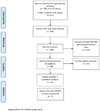Content guidance for mobile phones short message service (SMS)-based antiretroviral therapy adherence and appointment reminders: a review of the literature
- PMID: 30497271
- PMCID: PMC6408301
- DOI: 10.1080/09540121.2018.1549723
Content guidance for mobile phones short message service (SMS)-based antiretroviral therapy adherence and appointment reminders: a review of the literature
Abstract
Mobile phones are increasingly being used to support health activities, including the care and management of people living with HIV/AIDS. Short message service (SMS) has been explored as a means to optimize and support behaviour change. However, there is minimal guidance on messaging content development. The purpose of this review was to inform the content of SMS messages for mobile health (mHealth) initiatives designed to support anti-retroviral therapy adherence and clinic appointment keeping in resource-limited settings. PubMed, OvidMedline, Google Scholar, K4Health's mHealth Evidence database, the mHealth Working Group project resource, and Health COMpass were searched. A request to online communities for recommendations on message content was also made. 1010 unique sources were identified, of which 51 were included. The information was organized into three categories: pre-message development, message development, and security and privacy. Fifteen of the publications explicitly provided their message content. Important lessons when developing the content of SMS were: (1) conducting formative research; (2) grounding content in behaviour change theory; and (3) reviewing proposed content with experts. Best practices exist for developing message content for behaviour change. Efforts should be continued to apply lessons learned from the existing literature to inform mHealth initiatives supporting HIV/AIDS care and treatment.
Keywords: HIV; SMS; adherence; biotechnology; infectious disease; mobile phone.
Conflict of interest statement
References
-
- Ammassari A, Trotta MP, Shalev N et al. (2012). Timed Short Messaging Service Improves Adherence and Virological Outcomes in HIV-1-Infected Patients With Suboptimal Adherence to Antiretroviral Therapy. JAIDS Journal of Acquired Immune Deficiency Syndromes, 59(1). doi:10.1097/qai.0b013e318244d873 - DOI - PubMed
-
- Azih C, Pao A, Narayan V. (2012) Swaziland: Improving client follow-up with automated text messaging. Retrieved January 1, 2017, from https://www.gfmer.ch/mhealth/coursefiles2013/improvingclientfollowupSwaz...
-
- Bigna JJ, Kouanfack C, Noubiap JJ, Plottel CS, & Koulla-Shiro S (2013). A randomized blinded controlled trial of mobile phone reminders on the follow-up medical care of HIV-exposed and HIV-infected children in Cameroon: Study protocol (MORE CARE). Trials,14(1), 313. doi:10.1186/1745-6215-14-313 - DOI - PMC - PubMed
Publication types
MeSH terms
Substances
Grants and funding
LinkOut - more resources
Full Text Sources
Medical

